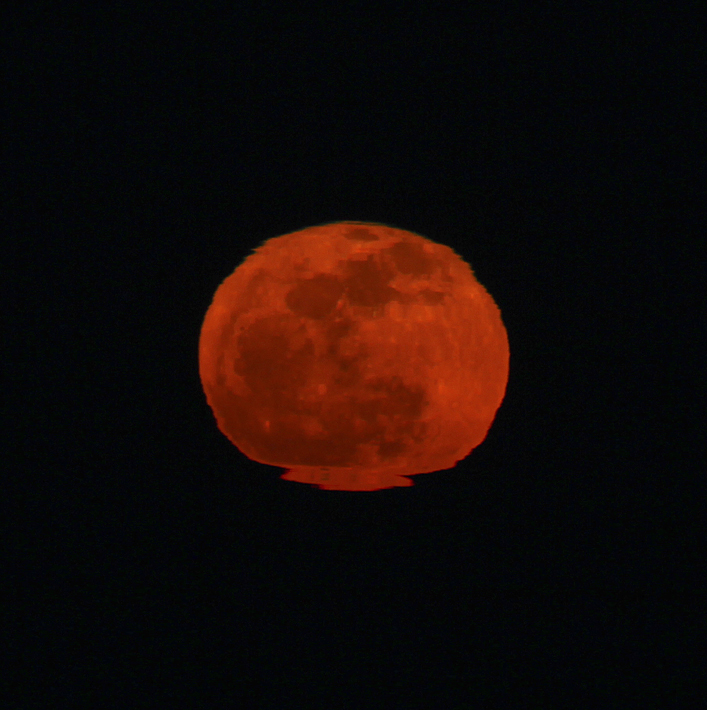Nature Walk: Moon Rise
By Kerri on March 31, 2014 in Blog

If you have watched the moon rise through the magnification of a pair of binoculars or a telescope, you may have noticed that it is not precisely circular in shape. The dense atmosphere close to the earth's surface usually contains warm and cold air layers. As the light passes through them, it may bend the light transmitted from the image and cause distortion. The effect is readily apparent in this image and especially at the base of the moon. The rich orange color is also an effect of atmospheric dust and haze or moisture in the air.
Where do you go to view the moon?
If you are interested in purchasing a print of this photo or requesting information on possible use of any of our “Nature Walk” photographs, please contact Carl Kurtz at cpkurtz@netins.net. View our other Nature Walk posts!
